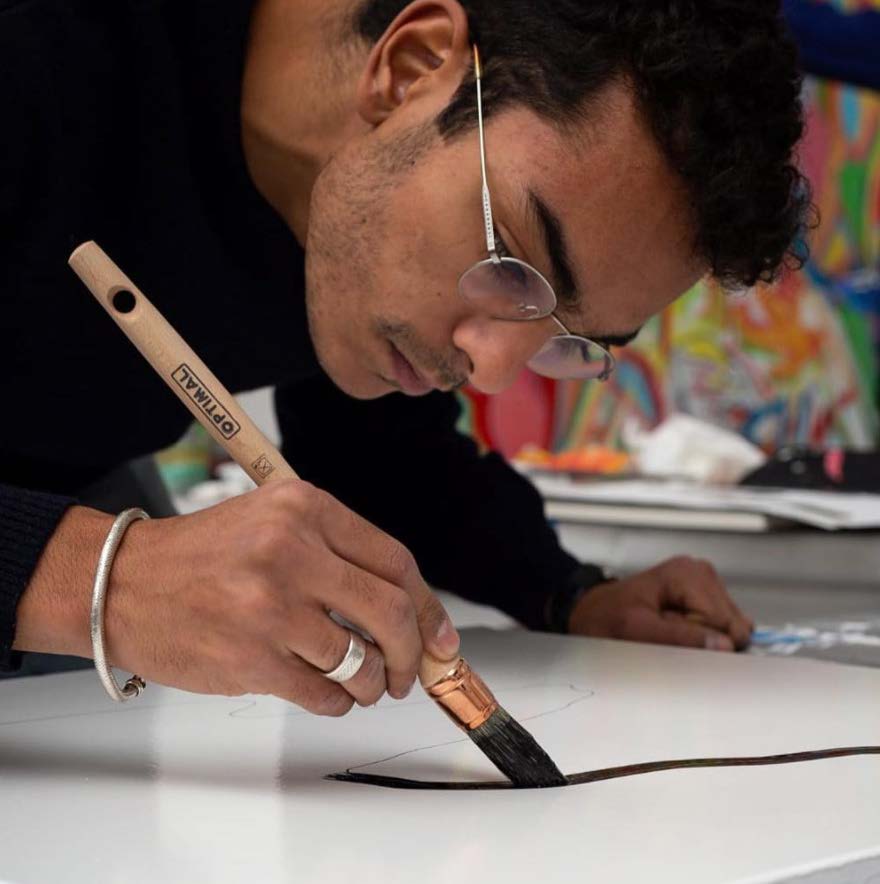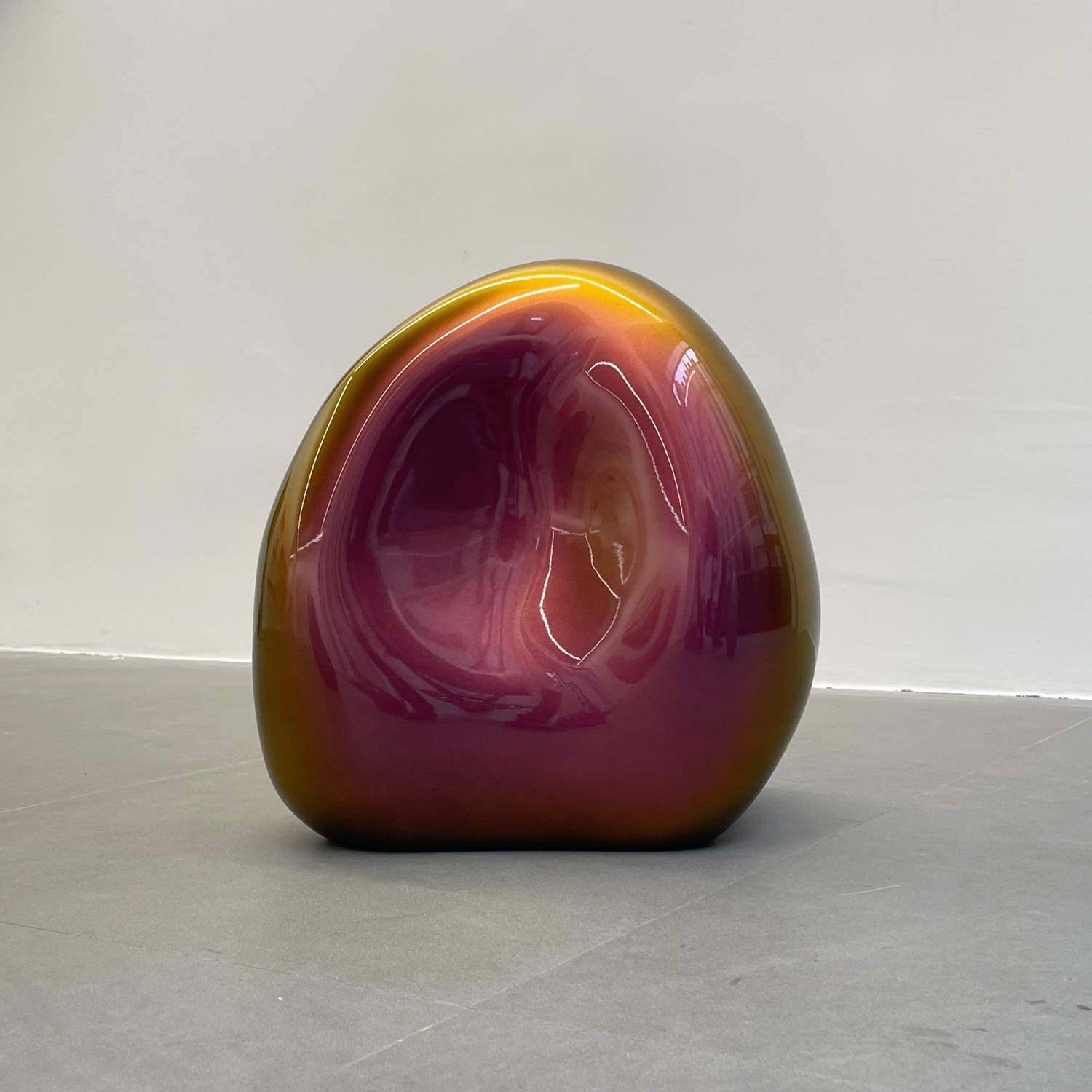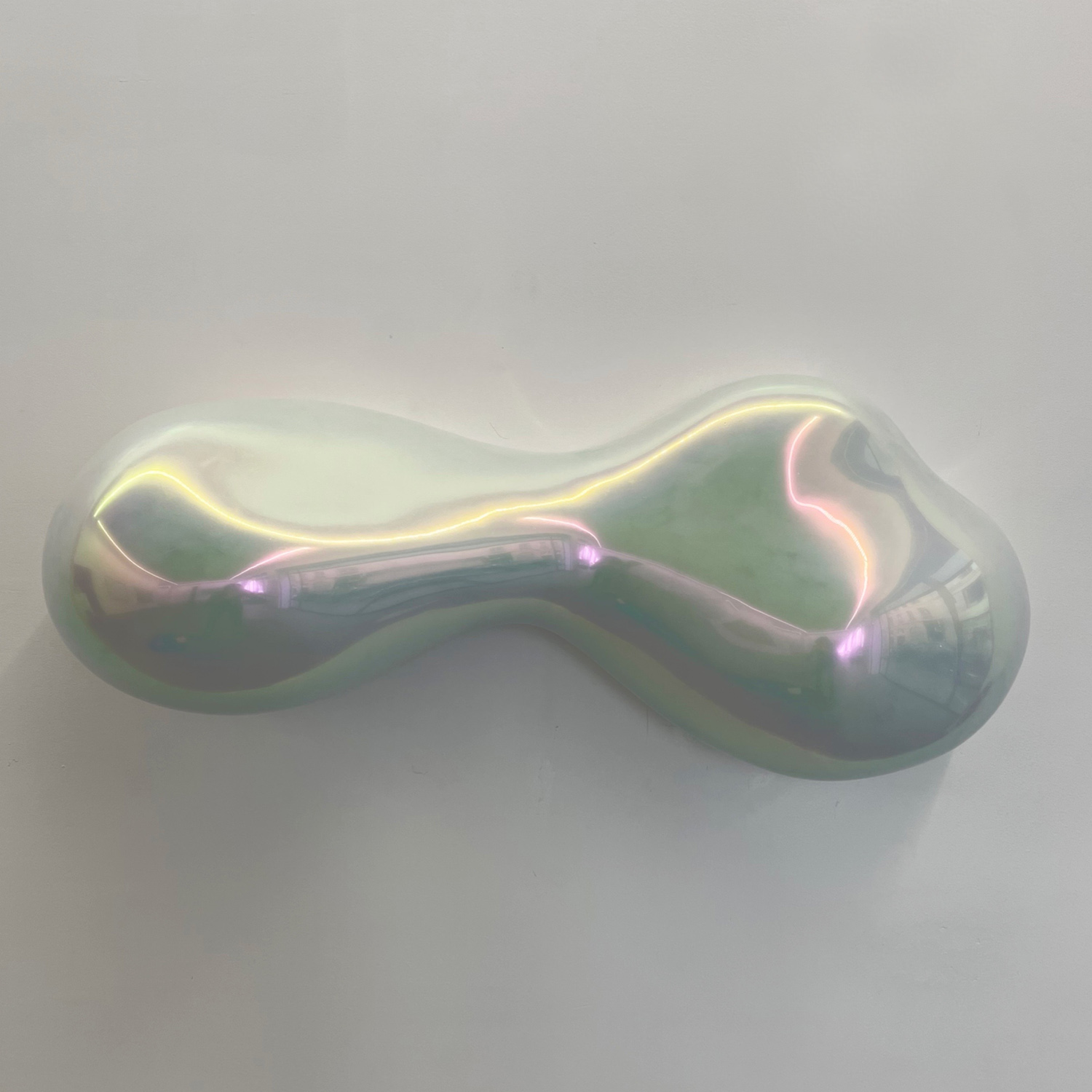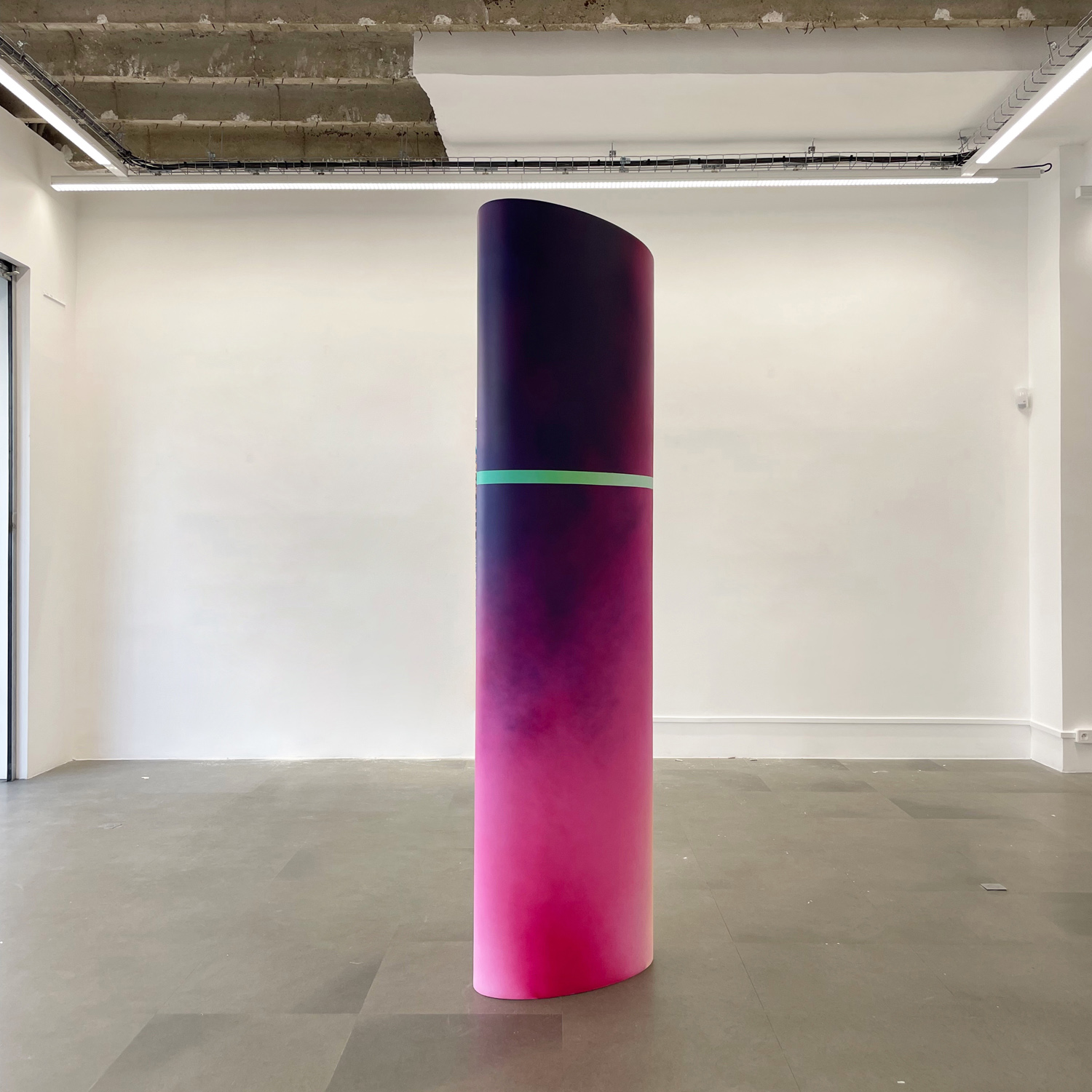Yanis Khannoussi was born in 1996 in Paris where he lives and works today. A graduate of the Beaux-Arts de Paris (class of 2021), it was with Dominique Gauthier that he first trained in painting, developing the foundations of what defines him plastically. He then worked alongside Ann Veronica Janssens, Dominique Figarella, and finally was followed by the painter Marc Desgrandchamps and the art historian François-René Martin.
Having very early asserted a deep interest in indus... trial iconography, more precisely for its repertoire of techniques and materials used, it is naturally that he turned to the workshop of composite materials at the Beaux-Arts, of which he is the instructor since 2018. Yanis has of course developed an important formal knowledge there but it has especially allowed him to consider painting differently. And as a painter he quickly became interested in the notions of gestures and colors, and he made them the substance of what is his work today. And the industrial material allowed him to open the fields of action and not to be restricted to the oil painting on canvas.
From then on, Yanis began to develop his own support, from molded resin, first of all to allow him to move away from the wall, to make the color appear in the space, to wander around it, but also to allow him to paint the edge of the supports by enlarging their dimensions, since the latter, then standardized by the thickness of the painting frames, remained thin and anecdotal. In short, it was necessary for him to make the support subject in its turn. This opening towards the industrial field was accompanied by a quest firstly towards the shiny with a surface treatment that imitates the finishing criteria of the bodywork industry. This concept of reflection allowed to accentuate the interaction between the Objects and their environment, allowing to integrate the image of a distorted world, of an altered reality. And since this path turned towards the tools and knowledge of the body painter Yanis has integrated the pneumatic gun into his practice, which has allowed him to dematerialize the gestures (the tool no longer touches the support) and thus to achieve the total erasure of any event recalling the manufacture of the Object, accentuating the contemplative experience of form and color.
LIRE PLUS
Having very early asserted a deep interest in indus... trial iconography, more precisely for its repertoire of techniques and materials used, it is naturally that he turned to the workshop of composite materials at the Beaux-Arts, of which he is the instructor since 2018. Yanis has of course developed an important formal knowledge there but it has especially allowed him to consider painting differently. And as a painter he quickly became interested in the notions of gestures and colors, and he made them the substance of what is his work today. And the industrial material allowed him to open the fields of action and not to be restricted to the oil painting on canvas.
From then on, Yanis began to develop his own support, from molded resin, first of all to allow him to move away from the wall, to make the color appear in the space, to wander around it, but also to allow him to paint the edge of the supports by enlarging their dimensions, since the latter, then standardized by the thickness of the painting frames, remained thin and anecdotal. In short, it was necessary for him to make the support subject in its turn. This opening towards the industrial field was accompanied by a quest firstly towards the shiny with a surface treatment that imitates the finishing criteria of the bodywork industry. This concept of reflection allowed to accentuate the interaction between the Objects and their environment, allowing to integrate the image of a distorted world, of an altered reality. And since this path turned towards the tools and knowledge of the body painter Yanis has integrated the pneumatic gun into his practice, which has allowed him to dematerialize the gestures (the tool no longer touches the support) and thus to achieve the total erasure of any event recalling the manufacture of the Object, accentuating the contemplative experience of form and color.
LIRE PLUS









